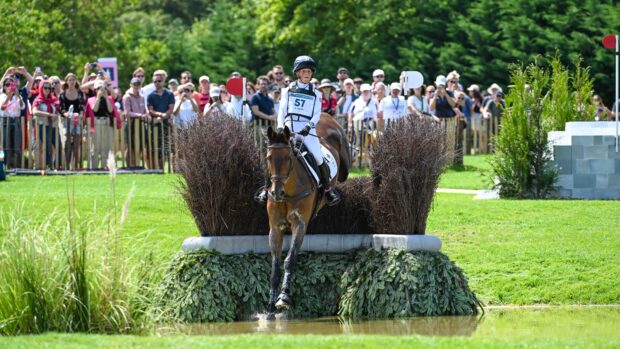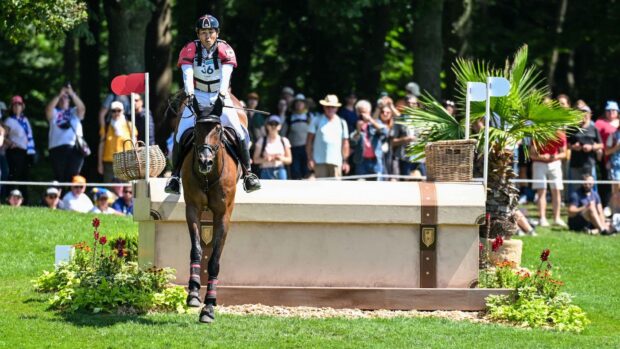BREEDING for temperament over “pizazz”, and the possibility of taking a leaf out of racing’s book on aftercare, were put forward as suggestions for the way forward for plaited show ponies.
Speaking at The Showing Council’s summer conference on 28 June, Rebecca Hamilton-Fletcher spoke of her concerns over some showing ponies, and possible solutions.
Ms Hamilton-Fletcher, an experienced equine vet, lifelong cross-discipline competitor and coach, who was involved in affiliated showing for years, gave a presentation on “Suitability of show riding ponies and their life after showing”.
“I see things from a number of perspectives and I think that’s useful here,” she said. “Showing has been wonderful for my daughter; it gives an insight into ringcraft, it’s helped with her dressage and when she went into eventing. There’s a lot to commend about a showing upbringing – but that should not be at the expense of the welfare of the ponies involved, and that’s why I’m here today.”
Asking whether the ridden show pony is fit for purpose, Ms Hamilton-Fletcher considered the rider size and weight debate.
“This is targeted at larger riders on these ponies, who are not competing them,” she said. “I know the reasons put forward for this and we need to discuss them. Social licence has been mentioned, and will be again. To me, it’s a good thing; it’s waking us up to the fact we’re sometimes complacent about welfare, or forget to address it properly. Anything that’s perceived as abuse of the horse needs to be addressed; we need to listen to what’s being said.”
Ms Hamilton-Fletcher said concerns cannot be ignored, and that this also applies to vets, adding: “We need to think more about our practices, especially for elite competition horses; we’re all victims of injecting joints, especially hocks, on demand, and that’s no longer good enough. Are we prioritising short-term performance gains over long-term welfare? Injecting hocks every six months on owner demand, or to gain extra points, is possibly not the right way to go.
“We need to think about this, and justify all we do in terms of welfare.”
Ms Hamilton-Fletcher said that although showing is not a high-risk discipline, with less risk of horse falls for example, it cannot be complacent.
Returning to the show riding pony, she said: “It’s a fabulous pony; beautiful, extravagant, elite, but sharp. That’s part of its wow factor, it wins classes, and unfortunately any characteristic that wins classes is selectively bred for. I’d suggest that being bred for movement and pizazz is being done at the expense of temperament. Some would say that doesn’t matter, but I’d argue that it does.”
Ms Hamilton-Fletcher said these ponies are shown as suitable for children, and this implies that temperament is suitable, adding: “Anyone selling a pony as such wouldn’t say, ‘Only suitable for a child if it’s ridden by someone much larger for half an hour or lunged continuously.’ That to me isn’t suitable for a child. It’s often said safety is key for these little riders, and to me that implies temperament.
“It’s said these aren’t classes for the safest pony but they’re for ponies suitable for children, so if that doesn’t mean safest, what does it mean?”
She explained that good temperament is not only beneficial in showing, it means the pony is more likely to have a second job and a “good life” later, as the biggest pony market is for versatile animals, and that some who are maybe not successful in the ring have few options.
“I see a lot of of similarities between racehorses and show riding ponies,” she said. “Those with better temperaments have a better chance to have a good life afterwards. Hats off to the racing industry for taking the steps they have [on aftercare]; this may be something for the showing societies to think about.”
“I see these ponies going to Pony Club camp and it’s a disaster,” she added. “They go back on the market, cheaper, and it goes wrong. It’s very, very sad to see.”
On the way forward, Ms Hamilton-Fletcher thought it would be worth conducting a survey on show riding ponies before and after showing, covering where they go, how many changes of homes, their health and lifespan. would support classes for ponies suitable for children, more emphasis on temperament in judging and breeding, and rules to stop unsuitably mounted riders working ponies in, as well as.
“I love these ponies, and feel sad when I come across them struggling,” she said. “It’s not what I want to see, and I’d like to see it being addressed.”
British Show Pony Society chair Paul Cook said the issue of rider weight can be a complex one, as “we’re mainly a children’s society, and we have age restrictions with ponies, but we have to be sensitive as many of our riders are young girls”.
“This is about education on people being unsuitably mounted,” he said. “We do have members’ conferences every year but we’re often speaking to the converted there. We’ve got to educate more widely, rather than dictating to people, and that’s what we’re doing.”
You might also be interested in:

Adult riders on children’s ponies: the rider-age and size debate continues

Five years on, show’s rider size policy is making change

Subscribe to Horse & Hound magazine today – and enjoy unlimited website access all year round
Horse & Hound magazine, out every Thursday, is packed with all the latest news and reports, as well as interviews, specials, nostalgia, vet and training advice. Find how you can enjoy the magazine delivered to your door every week, plus options to upgrade your subscription to access our online service that brings you breaking news and reports as well as other benefits.





